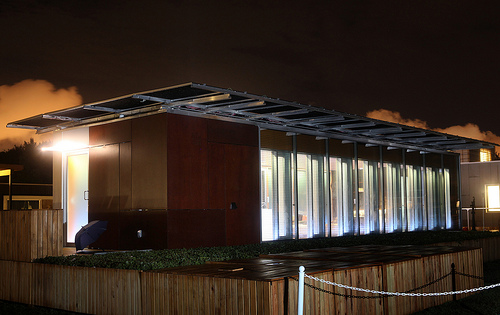Technology Spotlight: Energy-Efficient Lighting
Tuesday, October 8, 2013By Solar Decathlon
Upgrading your lighting is one of the most practical ways to increase your home’s energy efficiency.
Compact fluorescent lamps (CFLs) provide the same amount of light as incandescent bulbs but use about 75% less energy. CFLs fit into common household fixtures and are available at most hardware stores. And although CFLs cost slightly more than incandescent bulbs, they save money over time by lasting 15 times longer than their less-efficient counterparts.
Light-emitting diodes (LEDs) offer proof that a lot of light can come in a small package. Typically less than 10 watts, LED lights are becoming more common in desk lamps and under-cabinet applications. This ultra-efficient technology is more expensive than both incandescent and CFL bulbs. However, LEDs can last 50 times longer than incandescent lights and have the potential to change the future of lighting.

As the sun sets in the evening, the color-changing LED strip lights on the exterior of the University of Tennessee’s Living Light house gradually fade in a seamless transition from day to night. (Credit: Stefano Paltera/U.S. Department of Energy Solar Decathlon)
Several U.S. Department of Energy Solar Decathlon teams have incorporated cutting-edge energy-efficient lighting strategies in their competition houses. For example, in 2011, the University of Tennessee’s Living Light house incorporated color-changing LED strip lights along the façade. Because it used sensors to automatically manage the electric lighting, the house shone differently whether its occupants were winding down after a long day or enjoying a dinner party with friends.
Learn more about efficient lighting solutions used by past Solar Decathlon teams in the 2009 product directory and the 2011 technical resources. Homeowners can also learn about local and state financial assistance available for energy-efficient purchases and improvements in the form of tax credits, rebates, and energy-efficient financing at the Energy Savers website.
Tags: Solar Decathlon, Solar Decathlon 2011, Solar Decathlon 2013, Tennessee
